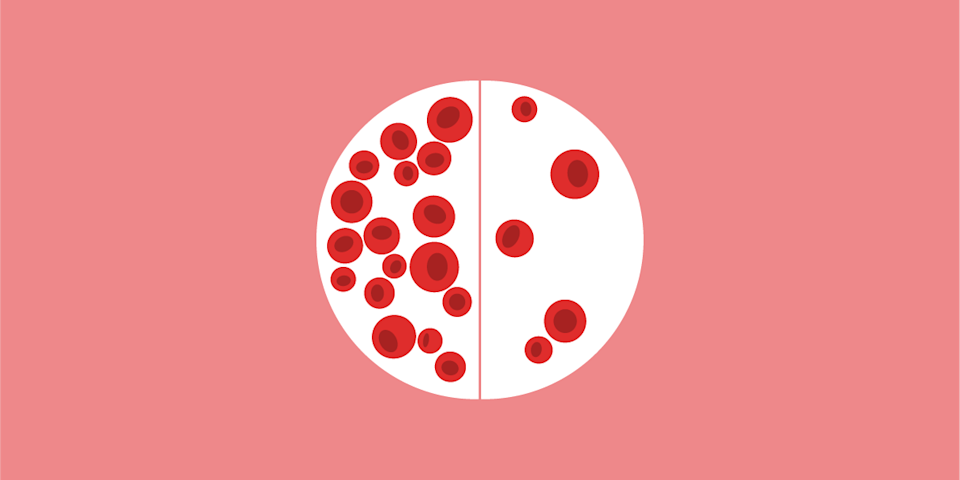Can your period cause anemia?

things to know :-
- 1) Monthly blood loss through menstruation can cause anemia
- 2)Heavy menstrual bleeding can make you more susceptible to iron deficiency anemia
- 3)Symptoms of iron deficiency anemia include:
- -tiredness,
- -weakness,
- -shortness of breath,
- -poor concentration,
- -lightheadedness.
Anemia can sneak up on you—
1)especially iron deficiency anemia.
2)It can happen slowly, over years, so that you might not notice the changes.
3) A fatigue that you can’t shake, regardless of how much you rest.
4)Feeling easily out of breath from activities you could always do before. Unexplained changes in your hair, nails, skin.
5)These are just some of the symptoms of iron deficiency.
5)Anemia is a huge public health problem globally, with 1.62 billion people (24.8% of the world population) predicted to be impacted.
First: what is anemia?

1)Anemia is the reduction in red blood cells or hemoglobin within the body .
2)Hemoglobin is an iron-containing protein within your red blood cells.
3)Hemoglobin binds and transports oxygen molecules to the cells of your body. With fewer red blood cells, your body (including your brain) cannot receive enough oxygen and function optimally.
What causes anemia?

1)Red blood cells are made in your bone marrow and have a lifespan of approximately 110 days, during which they circulate and deliver gases throughout the body .
2) As they age, they are eventually broken down in the spleen, lymph nodes, and liver, and their parts are recycled within the body.
3)Any disruption along the lifecycle of the red blood cell (creation, functional life span, or destruction) could cause anemia.
4)Common causes of anemia include:
-blood loss,
-parasitic infections,
-nutritional deficiencies,
-absorption problems,
-chronic disease
Periods and anemia =

1)People who menstruate are disproportionately affected by anemia due to the fact that they lose blood through their periods.
2)In fact, 29% of non-pregnant women and 38% of pregnant women worldwide are affected by anemia (4).
3)When blood is lost every month during menstruation, the iron within those red blood cells is also lost.
4)If monthly iron intake and absorption does not replace the iron lost during your period, you can end up with iron deficiency anemia .
5)People with heavy menstrual bleeding are more susceptible to iron-deficiency anemia.
6)A person is considered to have heavy menstrual bleeding when their menstrual period is typically over 80 ml .
7) Some causes of heavy menstrual bleeding can be
-attributed to fibroids (abnormal growth of muscle tissue on your uterus),
-adenomyosis (a condition where endometrial tissue invades into the muscular wall of the uterus),
-polyps (abnormal growths on your cervix or the inside of your uterus) or bleeding disorders (6).
8)Menstrual periods are not the only gynecological source of iron-deficiency anemia.
9)During pregnancy and lactation, as with any time of increased growth and development, there is an increased need for iron.
10)It is important for pregnant people to ensure that they have adequate iron, since low iron levels can harm both parent and child .
11)During pregnancy, you need 2 to 3 times the normal amount of iron you’d need when not pregnant.
12)Blood loss during childbirth can also further contribute to anemia.
What are the symptoms of anemia?

1)Anemia, particularly the iron deficient type, can have an insidious onset as it can take years to slowly develop.
2)Some of the symptoms of iron deficiency anemia include: -
-tiredness,
-weakness,
-shortness of breath,
-poor concentration,
-lightheadedness,
-cold intolerance,
-heart palpitations.
Other physical signs that your healthcare provider will look for are:
-paleness (particularly on your inner eyelids),
-hair loss,
-chapping at the corners of your mouth,
-nail changes,
-poor circulation (cold fingers and toes)
Comments